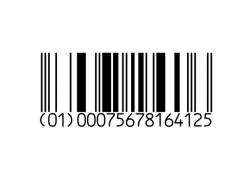Industry Groups Urge Retailers To Prepare For Retirement Of Coupon Barcodes
January 29, 2015 | 4 min to read

WASHINGTON, D.C. – The Joint Industry Coupon Committee (JICC) today urged retailers to prepare for the retirement of UPC Prefix 5 barcodes from manufacturer coupons. These symbols will no longer be used after June 30, 2015 as manufacturers shift to exclusive use of the GS1 DataBar™ format for coupons.
Most existing retail scanning systems are capable of reading the GS1 DataBar™, advises the JICC. To ensure readiness, retailers may simply need to enable the functionality in their systems. In some instances, software and/or hardware modifications may be required. To avoid a disadvantaged position in the marketplace after June 30, retailers are encouraged to implement and activate these technologies as soon as possible.
Retailers and consumers alike will benefit from use of the GS1 DataBar™. In addition to coupon redemption efficiencies, it can reduce incidences of intentional coupon fraud and unintentional coupon mis-redemption. Specific benefits include:
- Automatic coupon expiration date check
- Automatically ties double-coupon value limits to exact purchase requirements
- Reductions in cashier intervention with complex offers placed within the code
- Allows for retailer-specific coupons
Failure to transition to the new coupon technology exposes retailers to a number of risks, including:
- Processing of expired or fraudulent coupons
- Inability of customers to use coupons at self-checkout kiosks
- Increased cashier labor and time to manually process coupons
- Reduced profitability of promotions
The decision to move to exclusive use of the GS1 DataBar™ was announced in 2007, with the phase out period for UPC Prefix 5 barcodes beginning in 2011 and concluding June 30, 2015. For additional information, visit the GS1 US web site: http://ow.ly/I6ne8.
The JICC works to increase efficiency and effectiveness in the development, distribution and redemption of coupons. It is comprised of retailer and manufacturer executives who oversee coupon programs and is administered by the Food Marketing Institute, Grocery Manufacturers Association, National Association of Chain Drug Stores and National Grocers Association.
Food Marketing Institute proudly advocates on behalf of the food retail industry. FMI’s U.S. members operate nearly 40,000 retail food stores and 25,000 pharmacies, representing a combined annual sales volume of almost $770 billion. Through programs in public affairs, food safety, research, education and industry relations, FMI offers resources and provides valuable benefits to more than 1,225 food retail and wholesale member companies in the United States and around the world. FMI membership covers the spectrum of diverse venues where food is sold, including single owner grocery stores, large multi-store supermarket chains and mixed retail stores. For more information, visit www.fmi.org and for information regarding the FMI foundation, visit www.fmifoundation.org. – See more at: www.fmi.org/about-us
*****
Based in Washington, D.C., the Grocery Manufacturers Association is the voice of more than 300 leading food, beverage and consumer product companies that sustain and enhance the quality of life for hundreds of millions of people in the United States and around the globe.
Founded in 1908, GMA is an active, vocal advocate for its member companies and a trusted source of information about the industry and the products consumers rely on and enjoy every day. The association and its member companies are committed to meeting the needs of consumers through product innovation, responsible business practices and effective public policy solutions developed through a genuine partnership with policymakers and other stakeholders.
In keeping with its founding principles, GMA helps its members produce safe products through a strong and ongoing commitment to scientific research, testing and evaluation and to providing consumers with the products, tools and information they need to achieve a healthy diet and an active lifestyle. The food, beverage and consumer packaged goods industry in the United States generates sales of $2.1 trillion annually, employs 14 million workers and contributes $1 trillion in added value to the economy every year. www.gmaonline.org
****
GS1 US, a member of GS1® global, is a not-for-profit information standards organization that facilitates industry collaboration to improve supply chain visibility and efficiency through the use of GS1 Standards, the most widely used supply chain standards system in the world. Nearly 300,000 businesses in 25 industries rely on GS1 US for trading-partner collaboration that optimizes their supply chains, drives cost performance and revenue growth while also enabling regulatory compliance. They achieve these benefits through solutions based on GS1 global unique numbering and identification systems, barcodes, Electronic Product Code (EPC®)-enabled RFID, data synchronization, and electronic information exchange. GS1 US also manages the United Nations Standard Products and Services Code® (UNSPSC®). www.gs1us.org
*****
NACDS represents traditional drug stores and supermarkets and mass merchants with pharmacies. Chains operate more than 40,000 pharmacies, and NACDS’ 125 chain member companies include regional chains, with a minimum of four stores, and national companies. Chains employ more than 3.8 million individuals, including 175,000 pharmacists. They fill over 2.7 billion prescriptions yearly, and help patients use medicines correctly and
safely, while offering innovative services that improve patient health and healthcare affordability. NACDS members also include more than 800 supplier partners and nearly 40 international members representing 13 countries. For more information, visit www.NACDS.org.
*****
The National Grocers Association (NGA) is the national trade association representing the retail and wholesale grocers that comprise the independent sector of the food distribution industry. An independent retailer is a privately owned or controlled food retail company operating a variety of formats. The independent grocery sector is accountable for close to one percent of the nation's overall economy and is responsible for generating $131 billion in sales, 944,000 jobs, $30 billion in wages, and $27 billion in taxes. NGA members include retail and wholesale grocers, state grocers associations, as well as manufacturers and service suppliers. For more information about NGA, visit www.nationalgrocers.org.
Source: Grocery Manufacturers Association
